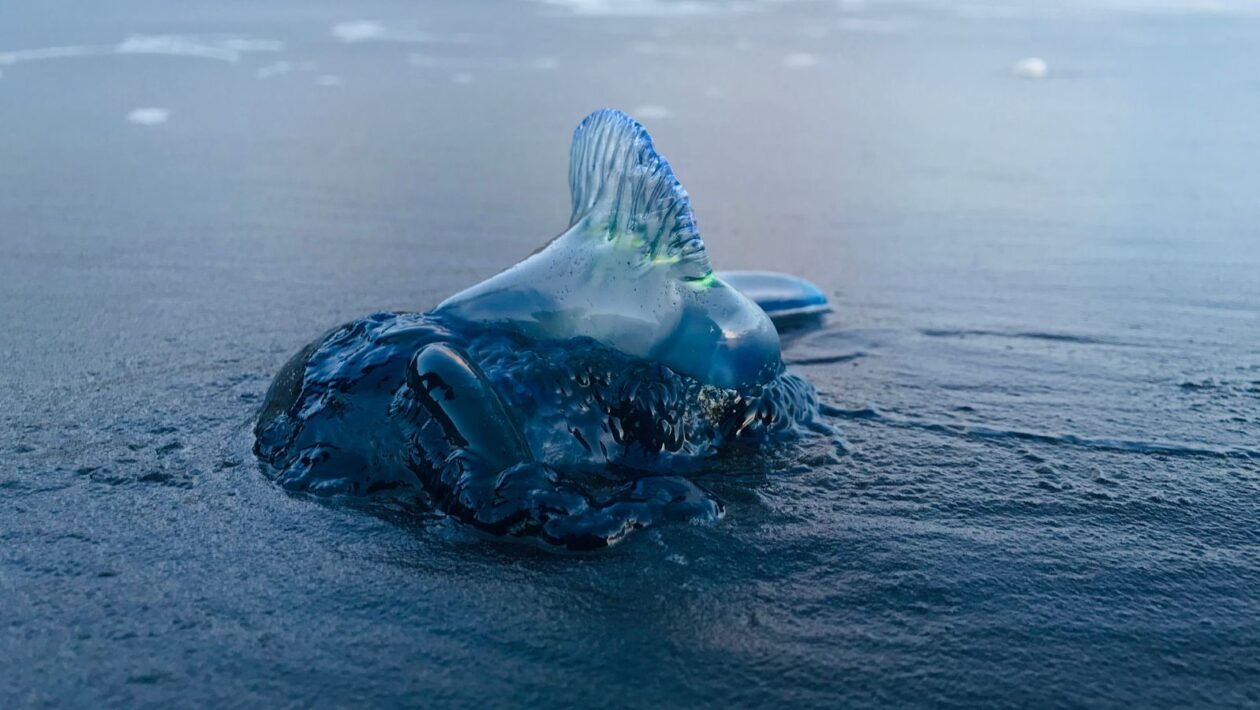[ad_1]

Stormy weather has resulted in an increase in sightings of Portuguese man o’war along the British coastline.
A total of 1,315 jellyfish sightings – and a 2% increase in man o’war sightings – were reported to the Marine Conservation Society as part of its annual review.
Portuguese man o’war has tentacles containing capsules with coiled barbed tubes delivering venom that can paralyse or kill small fish and crustaceans.
Its sting is rarely fatal for humans but can still be very painful and cause welts on the skin.
A spokeswoman for the charity said: “Storms in October 2021 and February 2022 led to an increase in Portuguese man o’war sightings, which were up by 2% from the previous year.
“Although they have a bad reputation, these jellyfish-like creatures don’t normally occur in UK waters, preferring instead to drift in the open ocean.
“Sightings of these unusual visitors were primarily along the southwest coast and the west coast of Scotland, with westerly winds carrying them across the Atlantic to our shores.
“Sometimes stranding at the same time was the violet sea snail, which floats on the surface in bubble rafts, feeding on Portuguese man o’wars.”
‘Changes in temperatures’
The man o’war is often thought of as a jellyfish but it is only closely related.
Instead it is a species of siphonophore – an animal made up of a colony of organisms working together.
Among the other animals spotted were the compass jellyfish and moon jellyfish, which each accounted for 23% of sightings, along with an increase in sightings of “other” species – up from 5% to 9% this year.
The spokeswoman said: “Tracking reports of ‘other’ species like these could show how changes in temperatures might be impacting jellyfish diversity in the UK.”
Leatherback turtles spotted in Scotland
A total of 11 turtles, which feed on jellyfish, were reported, including six live leatherback turtles spotted on the coast of Scotland.
Amy Pilsbury, MCS citizen science project lead, said: “We use these sightings, alongside scientists, to spot trends in the distribution of jellyfish and marine turtles around the UK.
“Investigating the relationships between species can help us to discover more about our amazing underwater world and how it might be changing in response to things like climate change.”
[ad_2]

